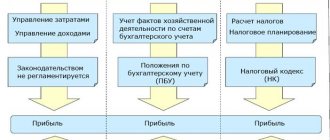Leasing traditionally raises many questions, especially for the lessee:
- how to show the receipt of an operating system for leasing in 1C 8.3 to the balance of the lessee;
- what are the postings of the advance payment under the leasing agreement in 1C 8.3;
- what are the transactions when accounting for leasing payments from the lessee in 1C 8.3;
- and many others.
And with the change in the VAT rate from 18% to 20%, another one appeared: what to do if the leasing agreement was concluded before 2020, and ends after?
In this article, we will look step-by-step at an example of purchasing a car on lease with analysis of transactions in 1C 8.3 - and we will just look at the agreement, the redemption of which is provided for in 2020. Minimum theory - maximum practice!
Transfer of advance payment to the lessor
Complete the transfer of the advance to the lessor with the document Debit from the current account, transaction type Payment to the supplier in the Bank and cash desk section – Bank – Bank statements – Debit from the current account.
Postings
Calculation method in tax accounting
For tax purposes, the methodology for determining the useful life of real estate is different.
There are strict requirements - it is necessary to select a depreciation group for the building in accordance with the Classification approved by Decree of the Government of the Russian Federation No. 1 of 01.01.2002.
In accordance with the established group, the useful period is determined.
For real estate objects, it is possible to be assigned to groups from 4 to 10 depending on the type of building, premises, its purpose, design features, and the material from which the structure is made.
The longest SPI is determined for buildings falling into depreciation group 10.
These are permanent buildings, non-residential and residential buildings, apartment buildings.
The owner of a property has the right to set any period from the proposed range of years for a specific group. If this is group 10, then the useful service life can be any duration over 30 years.
In tax accounting, there are only 2 ways to calculate depreciation:
- Linear - linear calculation calculator;
- Nonlinear accelerated.
For buildings and structures, you can only choose the linear calculation method, in which depreciation charges are calculated evenly.
The procedure for calculating the linear method is described above; it is similar to that established for accounting.
Examples of depreciation deductions for real estate
Below are two examples: in the first, depreciation is calculated on non-residential premises located in a brick building, in the second, an apartment is considered that the company rents to its employee.
The useful life in both cases is more than 30 years.
For non-residential premises with a service life of over 30 years
Initial data:
The organization purchased non-residential premises, which are located in a permanent brick building.
The premises are assigned to depreciation group 10, and the SPI is set for it = 31 years (372 months).
The property was registered as a fixed asset at a cost of 5 million rubles.
It was decided to calculate depreciation using the straight-line method.
Calculation:
Norm A. = 1 / 372 * 100% = 2.67%
Annual A. = 5,000,000 * 2.67% = 133,500.
Monthly A. = 133,500 / 12 = 11125.
Every month for 31 years, the organization will write off the cost of non-residential premises in the amount of 11,125 rubles. using wiring Dt 20 Kt 02.
For an apartment when renting out
A residential apartment on the balance sheet of an enterprise can be used to rent to employees of the organization for a fee. In this case, such a fixed asset item will be accounted for in account 03.
Despite the fact that the employee will actually use the apartment, the residential property will continue to be listed on the enterprise’s balance sheet, and the organization is obliged to charge monthly depreciation on it.
For accrual purposes for accounting purposes, you can choose linear or one of three non-linear methods of writing off value. For tax accounting, you can choose either linear or nonlinear.
The most convenient way is to calculate depreciation using the straight-line method both for accounting and tax purposes. In this case, the discrepancies will be minimal or absent.
When transferring an apartment for rent, internal wiring is done Dt 03. Property transferred for rent Kt 03. Property for rent.
For the amount of accrued depreciation at the time of renting out the apartment, posting Dt 02. Depreciation on fixed assets Kt 02. Depreciation on fixed assets in the lease is made.
Accrued depreciation charges are written off as other expenses by posting Dt 91.2 Kt 02. Depreciation on fixed assets in lease.
When the apartment is returned to the company, reverse postings are made.
Initial data:
The company purchased an apartment for payment and put it on its balance sheet at a cost of 3 million rubles.
The apartment is located in an apartment building and is assigned to depreciation group 10; its useful life is set at 35 years (420 months) both in tax and accounting.
Starting from April 2020, the apartment is leased to an employee of the organization, the term of the rental agreement is 11 months. Accommodation fee 10,000 rub. The employee is paid monthly at the cash desk.
As of April 2020, accumulated depreciation is 150,000.
Calculation and postings:
Dt 03. Transferred property Kt 03. Property for rent in the amount of 3 million rubles.
Dt 02. Depreciation on fixed assets Kt 02. Depreciation on fixed assets in a lease in the amount of 150 thousand rubles.
Norm A. = 1 / 420 * 100% = 2.38%.
Annual A. = 3,000,000 * 2.38% = 71,400.
Monthly A. = 71,400 / 12 = 5,950.
The posting of Dt 91.2 Kt 02 is carried out monthly. Depreciation on fixed assets in the lease in the amount of 5950.
Registration of SF for advance payment from supplier
The Lessee may deduct VAT from the advance payment to the Lessor if:
- correctly executed SF;
- agreement providing for prepayment;
- documents for transfer of advance payment.
You can register an invoice issued for an advance from the document Write-off from current account by clicking the Create based and selecting Invoice received .
Invoice document is automatically filled in with the data from the document Write-off from the current account .
- The transaction type code is “Advances issued.”
Read more about Options for accepting VAT for deduction using the document Invoice received
Accounting when purchasing real estate. Depreciation calculation
The organization that purchased the property accepts it for registration regardless of the fact of registration of the right to the property. The property is one of the types of fixed assets, therefore it is subject to inclusion in a separate depreciation group. From the beginning of the month following the purchase, the amount of depreciation is calculated. Read also the article: → Depreciation of fixed assets: types, calculation features, use in management.
For tax accounting, it is important to comply with the following requirements:
- The company prepared and submitted documents for state registration.
- The facility has already been put into operation.
Most often, a company that has purchased real estate uses the straight-line depreciation method (see → methods for calculating depreciation of fixed assets in accounting). The rate is determined based on the period of useful use. It is reduced by the number of years (months) of work at the previous enterprise.
The useful life of the OS is determined by one of the following methods:
- Taking into account the useful life of the total.
- Based on its remainder.
Important! When choosing the second option, you should have a document confirming the period of use of the OS by the previous owner. If this is not possible, then you need to go with the first option. The organization can set this period independently.
Example No. 3. (Following the data of example No. 2). The buyer records in his accounting:
| date | Debit | Credit | Sum | Operations |
| 01.03.2016 | 08 | 60 | 1 694 916 | The construction has arrived |
| 01 | 08 | 1 694 916 | The structure is accepted for accounting as fixed assets | |
| 25.04.2016 | 19 | 60 | 305 084 | VAT amount allocated |
| 68 | 19 | 305 084 | VAT is accepted for deduction |
Entry into leasing in 1C 8.3: balance holder - lessee
At the time of transfer of property for leasing, the Lessor does not issue an invoice to the Lessee and does not present the VAT amount. Consequently, at the time of transfer of property for leasing, the Lessee does not have the right to deduct VAT from the cost of the leased property.
The Lessee's right to deduct VAT arises when:
- The lessor issues an invoice for lease payments;
- The lessor issues an invoice for the redemption price at the time of redemption of the property.
Document the receipt of leased property on the balance sheet of the lessee with the document Receipt into leasing from the section Fixed assets and intangible assets – Receipt of fixed assets – Receipt into leasing.
In accounting , the leased property recorded on the balance sheet by the Lessee is recognized by him as a fixed asset. Its initial cost is formed depending on the contract (clause 8 of PBU 6/01, Order of the Ministry of Finance of the Russian Federation dated February 17, 1997 N 15):
- from the sum of all leasing payments and the redemption price, i.e. the full cost of the contract, including VAT, if there is only one contract and includes the terms of redemption and the redemption price;
- from the amount of all leasing payments without the redemption price, i.e. the full cost of the contract, including VAT, if there is a separate purchase and sale agreement for the redemption value of the leased asset.
Postings
The document generates transactions:
- Dt 08.04.1 Kt 76.07.1 - lease liabilities in the amount of the cost of the asset taken onto the balance sheet;
- Dt 76.07.9 Kt 76.07.1 - rental obligations in the amount of VAT 18%.
Attention! Due to the increase in the VAT rate to 20% in 2020, VAT obligations will change!
IV. Restoration of fixed assets
26. Restoration of a fixed asset object can be carried out through repair, modernization and reconstruction.
27. Costs for the restoration of fixed assets are reflected in the accounting records of the reporting period to which they relate. At the same time, the costs of modernization and reconstruction of a fixed asset object after their completion increase the initial cost of such an object if, as a result of modernization and reconstruction, the initially adopted standard performance indicators (useful life, power, quality of use, etc.) of the object are improved (increased) fixed assets.
28. Expelled. — Order of the Ministry of Finance of the Russian Federation dated December 12, 2005 N 147n.
Reflection of the leased asset as part of the operating system
Acceptance of the leased asset for accounting on the balance sheet of the lessee is carried out in 1C 8.3 with the document Acceptance for accounting of fixed assets, type of operation Equipment from the section Fixed assets and intangible assets - Receipt of fixed assets - Acceptance for accounting of fixed assets.
Tab Fixed assets .
Accounting tab :
- Account — 01.03;
- Depreciation (depreciation) account — 02.03.
In accounting, the useful life of an item of fixed assets is determined by the organization independently when accepting the item for accounting (clause 20 of PBU 6/01).
Tax accounting tab .
The rules for forming the initial cost of leased property in BU and NU are different!
In the NU, despite the fact that ownership of the leased property does not pass until its redemption, it is recognized as depreciable property, and its value is determined as the sum of all the Lessor’s expenses for its acquisition (clause 1 of Article 257 of the Tax Code of the Russian Federation). The value of leased property for tax accounting is taken from the Lessor’s certificate of its book value.
The useful life of depreciable property in tax accounting is determined by the party on whose balance sheet it is taken into account (clause 10 of Article 258 of the Tax Code of the Russian Federation) in accordance with the depreciation group, based on the classification of fixed assets approved by the Government of the Russian Federation (clause 2 of Article 259.1 of the Tax Code of the Russian Federation ). Currently, to determine the depreciation group, it is necessary to use OKOF OK 013-2014 (SNS 2008), adopted and put into effect by Order of Rosstandart dated December 12, 2014 N 2018-st.
Postings
The document generates transactions:
- Dt 01.03 Kt 08.04.1 - the initial cost in the accounting system was formed (1,553,400);
- Dt 01.03 Kt 08.04.1 - the initial cost was formed in NU (1,020,000);
- Dt 01.K Kt 08.04.1 - the difference in the cost of fixed assets between accounting and tax accounting in NU is taken into account.
The purpose of account 01.K is to account for the non-depreciable part of the cost of fixed assets in the tax accounting system, i.e., the difference between the cost of leased property in tax and accounting.
Features of accounting and tax accounting of real estate purchase and sale transactions
Monthly magazine “Economic and Legal Bulletin” N 5, 2006
Krutyakova T. L.
The main difficulties of accounting and tax accounting of real estate <*> are due to the fact that ownership of real estate, the emergence of such rights, their transfer and termination are subject to state registration in the Unified State Register (clause 1 of Article 131 of the Civil Code of the Russian Federation).
At the same time, paragraph 2 of Art. 8 of the Civil Code of the Russian Federation establishes that rights to property subject to state registration arise from the moment of registration, unless otherwise provided by law. The procedure for state registration is determined by the Federal Law on the registration of rights to real estate and transactions with it dated July 21, 1997 N 122-FZ. According to paragraph 3 of Art. 2 of Law N 122-FZ, the date of state registration is the day the corresponding records of rights are made in the Unified State Register of Rights to Real Estate (USRE) <**>. State registration of rights is carried out at the location of real estate within the registration district (clause 4 of article 2 of Law N 122-FZ) and is carried out no later than one month from the date of filing the application and documents required for state registration (clause 3 of article 13 of Law No. 122-FZ). The completed state registration of the emergence and transfer of rights to real estate is certified by a certificate of state registration of rights (clause 1 of Article 14 of Law No. 122-FZ).











